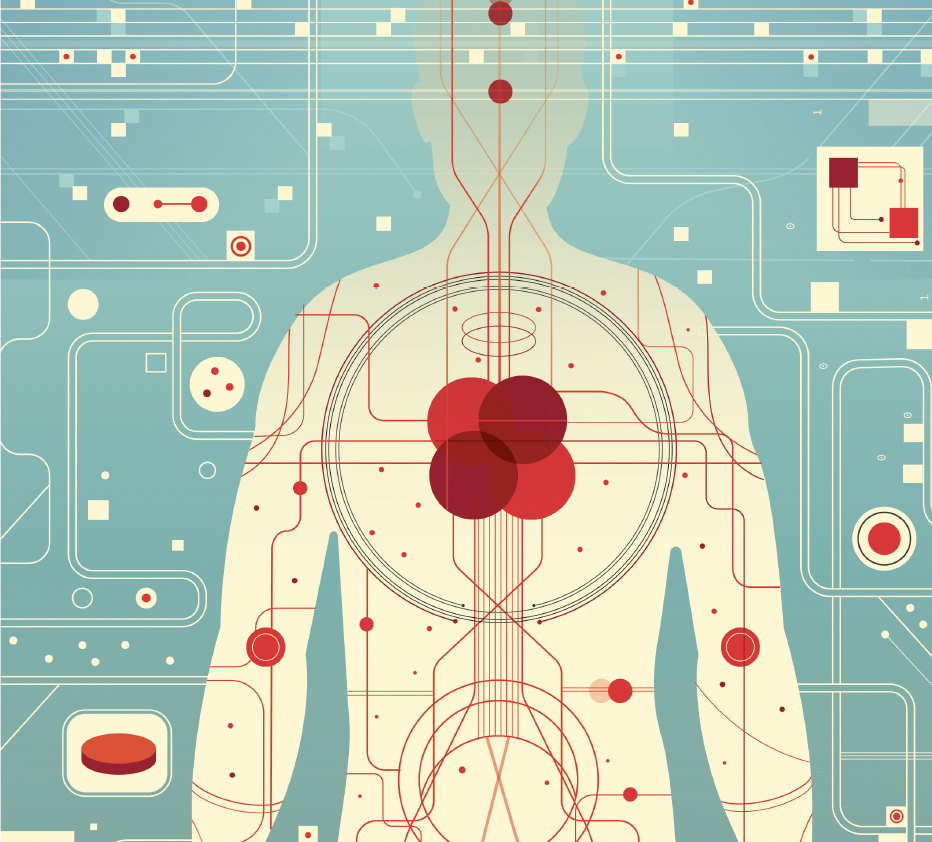
Precision EM: Virtual Care
As a first step toward telehealth for acute care, Sam Shen, MD helped to create a site for remote COVID-19 patient-physician consultations during the height of the pandemic.
Ryan Ribeira, MD led implementation of computer tablets in patient rooms at eye-level to augment communication and interaction.
Telehealth & Remote Emergency Services
As health systems work to provide a range of virtual services from prevention to primary care, Stanford’s long-term vision is to extend this continuum to include virtual emergency care, including assessment, diagnostics, treatment, and follow-up. The challenges of the COVID-19 pandemic presented opportunities for Stanford’s Department of Emergency Medicine to make major strides toward this vision with three foundational programs.
Step One: When a parking garage is more than a parking garage
One of Stanford’s first steps toward virtual emergency care was to establish a drive-through alternative care site for COVID-19 testing in 2020, supported by a remote emergency medicine physician. Patients drove into the garage adjacent to Stanford’s Marc and Laura Andreessen Adult Emergency Department (ED) and registered for their visit through their phones. ED nurses in personal protective equipment measured their temperature, oxygen saturation, and pulse, and swabbed them for COVID-19. A laboratory runner retrieved specimens from the drive-through site every 15 minutes.
A telemedicine platform on wheels was then positioned near the patient’s car and an emergency medicine physician stationed in the hospital initiated a remote assessment and discussion with the patient via video. The physicians utilized streamlined charting tools that enabled them to see as many as 100 patients in a single shift while minimizing exposure to COVID-19. Nearly 5,500 patients received safe, expedited care in the drive-through area.
Step Two: Utilizing iPads to increase interactions with patients in isolation
Through 120 iPads mounted at eye-level in ED patient rooms, physicians and nurses can now provide supplemental, virtual care by calling in to patient rooms to gather history, provide updates, and conduct physical assessments. Specialists, interpreters, and some consultants use the system to meet with patients remotely, and the iPads have been used to allow patients to meet virtually with family, view informational videos, and consent to participate in clinical research. The innovation was developed and implemented in just eight days in the early stages of the COVID-19 pandemic when personal protective equipment was in short supply.
Step Three: Telehealth
Patients in the Stanford ED who meet specific, low-acuity criteria may now choose to be treated by a remote, board-certified telehealth emergency medicine physician.
Patients are taken to a designated telehealth room in the ED where they connect by video with the emergency medicine physician to discuss their concerns and symptoms. An on-site technician and nurse are guided by the physician and can conduct basic physical examinations while the physician observes on a monitor. Physicians use the interaction, observations, and certain test results as needed to evaluate, diagnose, and determine best next steps for care.
Since the program was implemented in early 2021, the number of patients served each day by the telehealth physician has increased by over 300% percent. The off-site physician provides support to both the adult and pediatric emergency departments, which experience unexpected patient surges at different times.
The program enables Stanford’s Department of Emergency Medicine to test and evaluate remote emergency care, with an eye toward scaling to other locations in the future. Stanford will also track wait time, patient satisfaction, length of stay, and other metrics to optimize the quality of care and patient experience.
Scheduling virtual follow-up visits
Patients can now be seen virtually by an emergency medicine physician for follow-up within 72 hours of an ED encounter. Based on the discharge condition, the physician can schedule the appointment for the patient to be evaluated from their home through the MyHealth app. The program was developed in part to increase access to a continuum of care for patients who may face transportation, scheduling, or mobility challenges.


